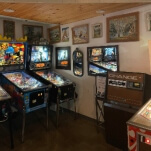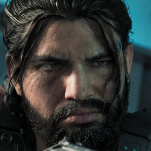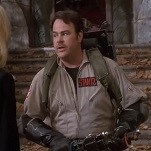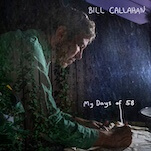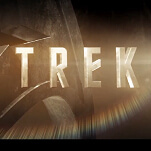Supposedly, Metal Gear Solid 4 was going to be Hideo Kojima’s swansong for his celebrated series, which launched in 1988. Upon MGS4’s release in 2008, Kojima announced his retirement from Metal Gear, imploring his younger staffers to pick up the torch. Then 2009 brought the announcement of Peace Walker, an MG prequel set in Central America during the Cuban Missile Crisis’ fallout, and taking ample advantage of Costa Rica’s status as a demilitarized nation. Kojima, presumably tiring of pacing around his house in a bathrobe, emerged from MG retirement to assure Peace Walker followed his unpredictable vision. Probably, he flashed back to the NES MG sequel Snake’s Revenge, made without him (he deemed it “a crap game”), then realized only he could make yet another videogame boldly declaring that war might be a bad thing.
While the thesis hasn’t changed, Peace Walker’s convoluted story necessitates too many flowcharts to succinctly summarize here. Basically, you’re up against the CIA and KGB, and your allies include a 16-year-old girl named Paz (Spanish for “peace”—get it?), a Nicaraguan revolutionary femme fatale and her kid brother, and Snake’s guerilla organization, Militaires Sans Frontières. In the latter, Snake’s other codename, “Big Boss,” is more literal: Between typical stealth missions, you micromanage and assign your troops to a variety of details, from R&D and gathering intel to combat and medical. While they initially seem tangential to the main game, these teams have an instrumental effect on Snake’s missions, while further encouraging you to shanghai enemy soldiers instead of slitting their throats. For example, beef up your medical team, and you’ll reap benefits like more potent tranquilizer darts. While this adds a layer to Peace Walker’s familiar fare, after 20-minute sneaking missions, it’s unlikely anyone will relish navigating a bunch of menus just to get some power-ups. Tellingly, you can automatically assign your subordinates to do whatever they feel best suited for.
It’s also disappointing that the repetitive, bite-size levels don’t reveal as much nuanced effort as the narrative: No amount of backtracking can be made more enjoyable with co-op online play, which your in-the-ear sidekick constantly hectors you to try. Peace Walker isn’t the most inventive MG to date, but its cherry-picked assembly of its predecessors’ best elements makes for a fine last hurrah. Until the next one.








